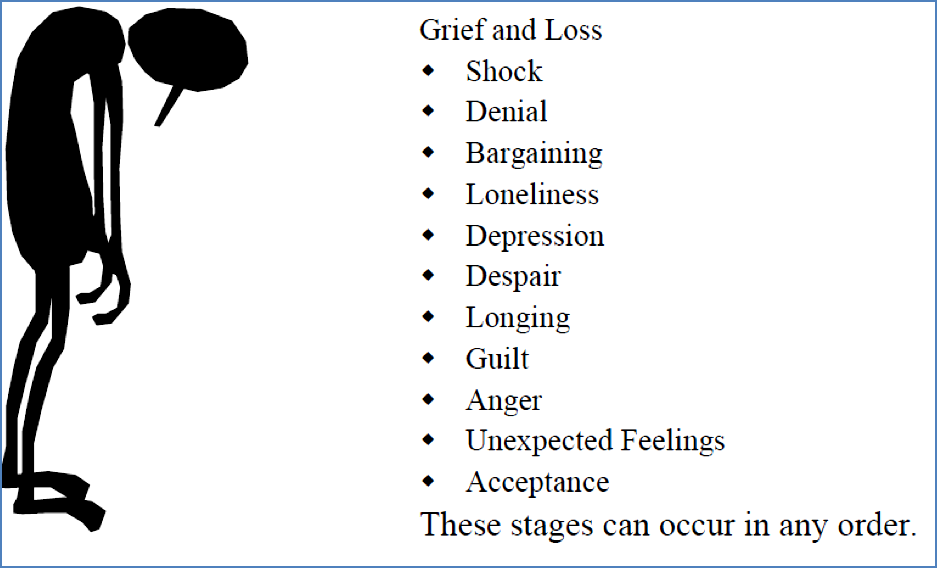Table of Contents
Overview – Grief & Loss
Grief and loss are universal human experiences shaped by cultural, social, psychological, and biological factors. While grieving is a natural response to loss, its manifestations vary widely across individuals. This article explores the dimensions of grief, models of coping, psychological adjustment, and indicators for formal support. A practical understanding of grief is vital for clinical care, especially in mental health, palliative care, and general practice.
Definition
Grief is a multidimensional emotional response to the loss of a loved one, role, or identity. It is influenced by:
- Culture
- Age
- Gender
- Physical and mental health
Every person grieves differently, and there is no “correct” way to grieve.
Dimensions and Manifestations of Grief
Physical
- Somatic complaints: chest pain, stomach aches, headaches
- Sleep disturbance
- Changes in appetite and weight
- Fatigue
- Breathlessness
Emotional
- Sadness, numbness, fear
- Guilt and self-blame
- Anxiety, crying, helplessness
- Anger or even relief (e.g. after prolonged illness)
- Loneliness and yearning

Cognitive
- Decreased concentration and memory
- Nightmares or preoccupation with the deceased
- Magical thinking (irrational beliefs)
- Confusion or disbelief
- Thoughts of death or dying
Behavioural
- Withdrawal
- Regressive or aggressive behaviour
- Obsessive activity
- Risk-taking or self-destructive behaviour
Spiritual
- Increased reliance on spiritual beliefs
- Loss or questioning of spiritual faith
Secondary Stressors
Loss often triggers additional sources of distress:
- Financial strain
- Legal complications
- Single parenting
- Identity loss (e.g. “Who am I if I’m no longer a spouse?”)
Models of Grief
Freud’s Psychoanalytic Model
- Early model proposing mourning as psychological detachment from the lost object
The Dual Process Model (DPM)
- Modern, flexible model incorporating two key domains:
| Loss-Oriented (Early) | Restoration-Oriented (Later) |
|---|---|
| Grief work | Life change adjustment |
| Intrusion of grief | Doing new things |
| Denial or avoidance of restoration | Distraction from grief |
- Individuals oscillate between these two processes to eventually adapt to their new reality
Adjustment and Resilience
Adjustment
- Grief is natural and expected
- Most people cope through informal supports (e.g. friends, family)
- Formal support (e.g. counselling or medication) is not always required
Resilience
- Most common grief trajectory
- Includes a range of pathways:
- Recovery with some symptoms
- Chronic grief (less common)
- Delayed grief is rare
- Pragmatic coping styles often show:
- Reduced expression of intense negative emotion
- Effective emotional regulation
Protective Factors
- Strong social network
- Capacity for positive emotion
- Flexible and problem-focused coping
When to Seek Support
Grief does not always require intervention. Support is recommended when:
- The individual asks for help
- Maladaptive coping is evident (e.g. substance misuse, compulsivity)
- There are thoughts of suicide or self-harm
- The person feels alone or helpless
Supporting the Bereaved
What they need from you:
- Presence and empathy
- Space to talk or cry
- Listening without judgment
- Occasionally, short-term pharmacological support (e.g. low-dose benzodiazepines for insomnia or acute anxiety) may be appropriate under clinical supervision
Summary – Grief & Loss
Grief and loss impact individuals physically, emotionally, cognitively, behaviourally, and spiritually. Though highly individualised, most people adjust without formal intervention. Understanding common trajectories, such as the Dual Process Model, helps clinicians identify when support is needed. For a broader context, see our Psychiatry & Mental Health Overview page.